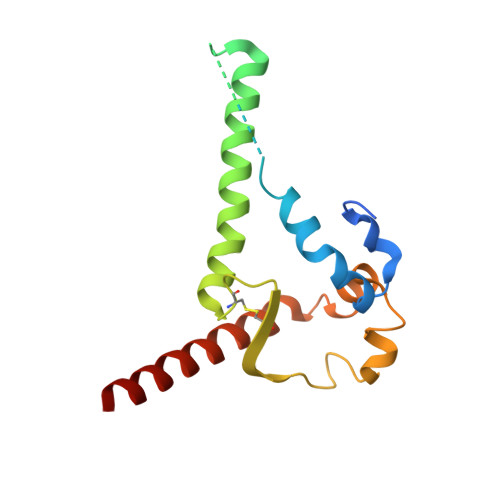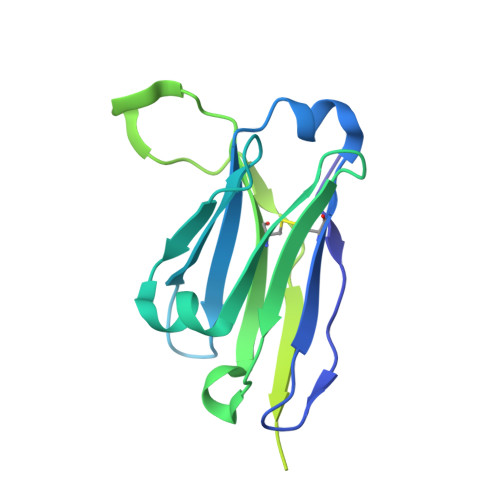The Glycan Hole Area of HIV-1 Envelope Trimers Contributes Prominently to the Induction of Autologous Neutralization.
Schorcht, A., Cottrell, C.A., Pugach, P., Ringe, R.P., Han, A.X., Allen, J.D., van den Kerkhof, T.L.G.M., Seabright, G.E., Schermer, E.E., Ketas, T.J., Burger, J.A., van Schooten, J., LaBranche, C.C., Ozorowski, G., de Val, N., Bader, D.L.V., Schuitemaker, H., Russell, C.A., Montefiori, D.C., van Gils, M.J., Crispin, M., Klasse, P.J., Ward, A.B., Moore, J.P., Sanders, R.W.(2022) J Virol 96: e0155221-e0155221
- PubMed: 34669426
- DOI: https://doi.org/10.1128/JVI.01552-21
- Primary Citation of Related Structures:
7RSN, 7RSO - PubMed Abstract:
The human immunodeficiency virus type 1 (HIV-1) trimeric envelope glycoprotein (Env) is heavily glycosylated, creating a dense glycan shield that protects the underlying peptidic surface from antibody recognition. The absence of conserved glycans, due to missing potential N-linked glycosylation sites (PNGS), can result in strain-specific, autologous neutralizing antibody (NAb) responses. Here, we sought to gain a deeper understanding of the autologous neutralization by introducing holes in the otherwise dense glycan shields of the AMC011 and AMC016 SOSIP trimers. Specifically, when we knocked out the N130 and N289 glycans, which are absent from the well-characterized B41 SOSIP trimer, we observed stronger autologous NAb responses. We also analyzed the highly variable NAb responses induced in rabbits by diverse SOSIP trimers from subtypes A, B, and C. Statistical analysis, using linear regression, revealed that the cumulative area exposed on a trimer by glycan holes correlates with the magnitude of the autologous NAb response. IMPORTANCE Forty years after the first description of HIV-1, the search for a protective vaccine is still ongoing. The sole target for antibodies that can neutralize the virus are the trimeric envelope glycoproteins (Envs) located on the viral surface. The glycoprotein surface is covered with glycans that shield off the underlying protein components from recognition by the immune system. However, the Env trimers of some viral strains have holes in the glycan shield. Immunized animals developed antibodies against such glycan holes. These antibodies are generally strain specific. Here, we sought to gain a deeper understanding of what drives these specific immune responses. First, we show that strain-specific neutralizing antibody responses can be increased by creating artificial holes in the glycan shield. Second, when studying a diverse set of Env trimers with different characteristics, we found that the surface area of the glycan holes contributes prominently to the induction of strain-specific neutralizing antibodies.
- Department of Medical Microbiology and Infection Prevention, Amsterdam Infection & Immunity Institute (AI&AII), Amsterdam UMC, Location Meibergdreef, University of Amsterdam, Amsterdam, The Netherlands.
Organizational Affiliation:
























